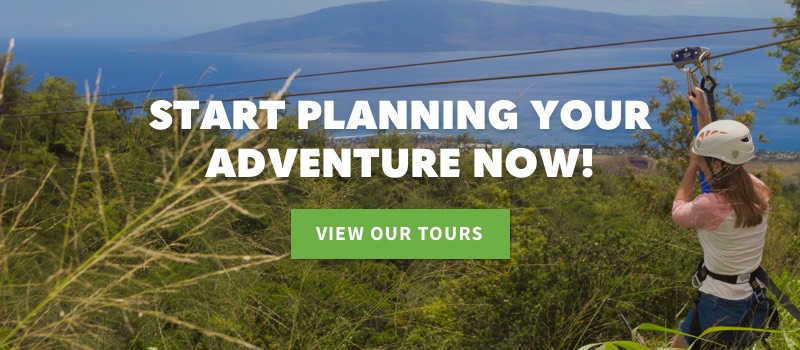Hawaii’s Native Birds
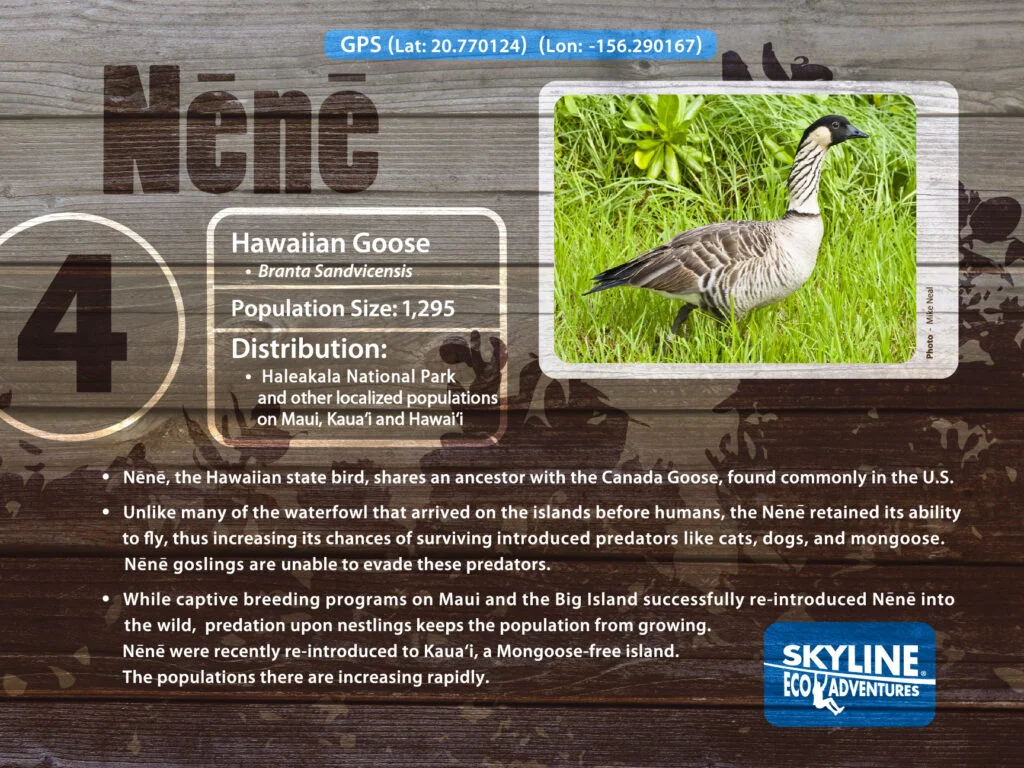
One thing that many people don't know is that Hawaii is the extinction capital of the world. This is due to the vast array of life that doesn't necessarily have high numbers to begin with. The islands started as a bird kingdom, much like New Zealand, before any human contact. Over the centuries the native bird life has dwindled greatly from the introduction of many invasive species such as mongoose and cane rats, as well as mosquito's and deforestation.
Here at skyline we do our best to honor the life that was here before us. A portion of every booking that we receive goes towards helping Hawaii's habitat and native species. Not only will you zipline and have the time of your life you will help our planet as well! Below you will find 5 native birds that you will learn about on our Haleakala, Maui zipline tour.
‘Alala
The critically endangered Hawaiian Crow is endemic to the island of Hawaii. In the past, “Alala were so numerous, they were considered pests by farmers. However, by 1981, only 30-150 individuals remained, due to the loss of feeding habitat, and introduced predators like rats, mongoose and cats. Avian diseases spread by introduced mosquito's also contributed to the population decline.  Today ‘Alala are extinct in the wild. Captive breeding programs on Maui and the island of Hawaii are working with a small genetic pool to build the population back up to then release them back in to the wild. These birds range in size from 18”-20” long, both sexes are mostly black with hints of brown. The omnivorous birds flock in small groups, feeding on the fruits of native plants. They also eat insects, mice and nestlings of small birds. the name ‘Alala refers to their call “cry like a child”.
Today ‘Alala are extinct in the wild. Captive breeding programs on Maui and the island of Hawaii are working with a small genetic pool to build the population back up to then release them back in to the wild. These birds range in size from 18”-20” long, both sexes are mostly black with hints of brown. The omnivorous birds flock in small groups, feeding on the fruits of native plants. They also eat insects, mice and nestlings of small birds. the name ‘Alala refers to their call “cry like a child”.
‘Akohekohe
The largest and most aggressive of the Maui’s honeycreepers, The ‘Akohekohe or Crested Honeycreeper averages 7 inches in length. This colorful bird is nectarivorous and can be seen dancing atop the native ‘Ohi’a tree, feeding on the red lehua blossoms and defending its territory from other birds. 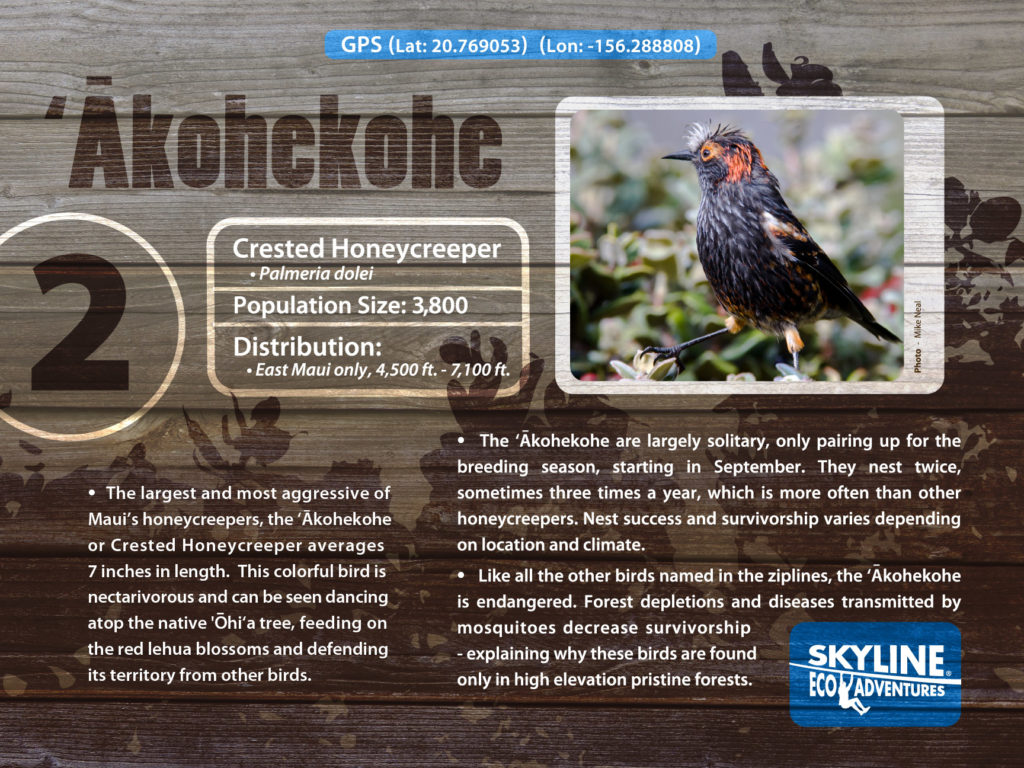 The ‘Akohekohe are largely solitary, only pairing up for the breeding season, starting in September. They nest twice, sometimes three times a year, which is more often than other honeycreepers. Nest success and survivor ship varies depending on location and climate. Like all other birds named in the ziplines, the ‘Akohekohe is endangered. Forest depletions and disease transmitted by mosquitos decrease survivor ship.
The ‘Akohekohe are largely solitary, only pairing up for the breeding season, starting in September. They nest twice, sometimes three times a year, which is more often than other honeycreepers. Nest success and survivor ship varies depending on location and climate. Like all other birds named in the ziplines, the ‘Akohekohe is endangered. Forest depletions and disease transmitted by mosquitos decrease survivor ship.
Kiwikiu
The loud crunching sounds of strong bills prying open twigs and branches announce the presence of the critically endangered Kiwikiu, a.k.a Maui Parrotbill. These birds are often found in mixed flocks with maui ‘Alauahio, a smaller yellow native forest bird with a short-needle like bill. 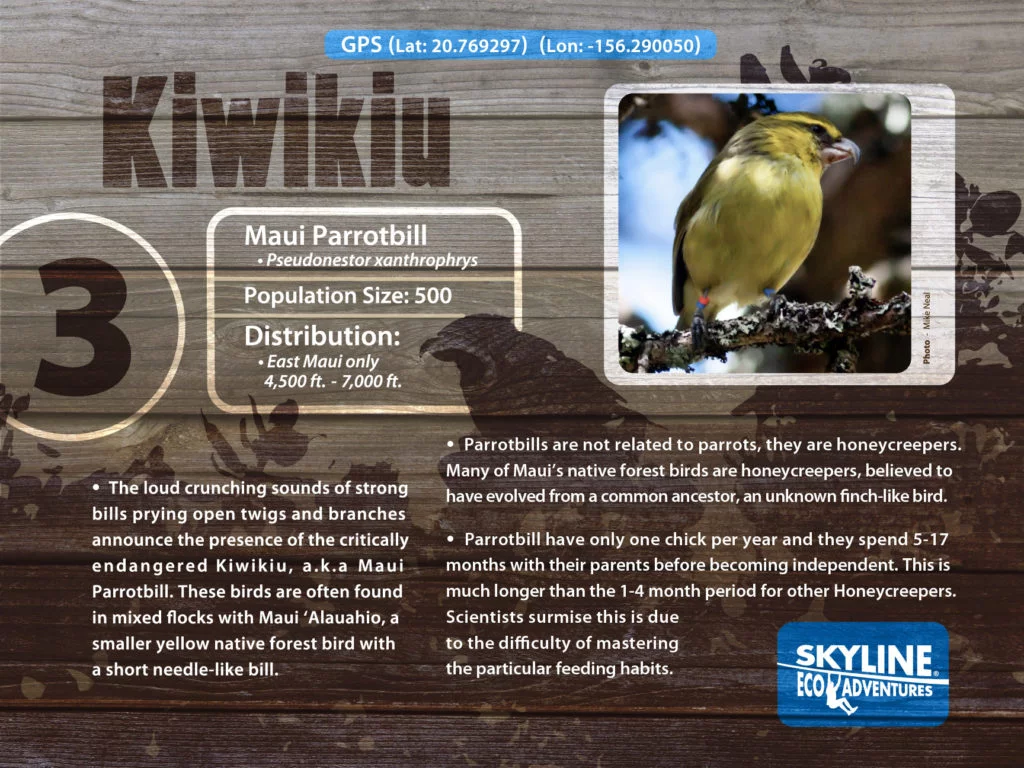 Parrotbills are not related to parrots, they are honeycreepers. Many of Maui’s native forest birds are honeycreepers, believed to have evolved from a common ancestor, an unknown finch-like bird. Parrotbill have only one chick per year and they spend 5-17 months with their parents before becoming independent. This is much longer than the 1-4 month period for other honeycreepers. Scientists surmise this is due to the difficulty of mastering the feeding habits.
Parrotbills are not related to parrots, they are honeycreepers. Many of Maui’s native forest birds are honeycreepers, believed to have evolved from a common ancestor, an unknown finch-like bird. Parrotbill have only one chick per year and they spend 5-17 months with their parents before becoming independent. This is much longer than the 1-4 month period for other honeycreepers. Scientists surmise this is due to the difficulty of mastering the feeding habits.
Nēnē
Nēnē, the Hawaiian state bird, shares an ancestor with the Canada goose, Found commonly in the U.S. Unlike many of the waterfowl that arrived on the islands before humans, nēnē retained its ability to fly, thus increasing its chances of surviving introduced predators like cats, dogs and mongoose. 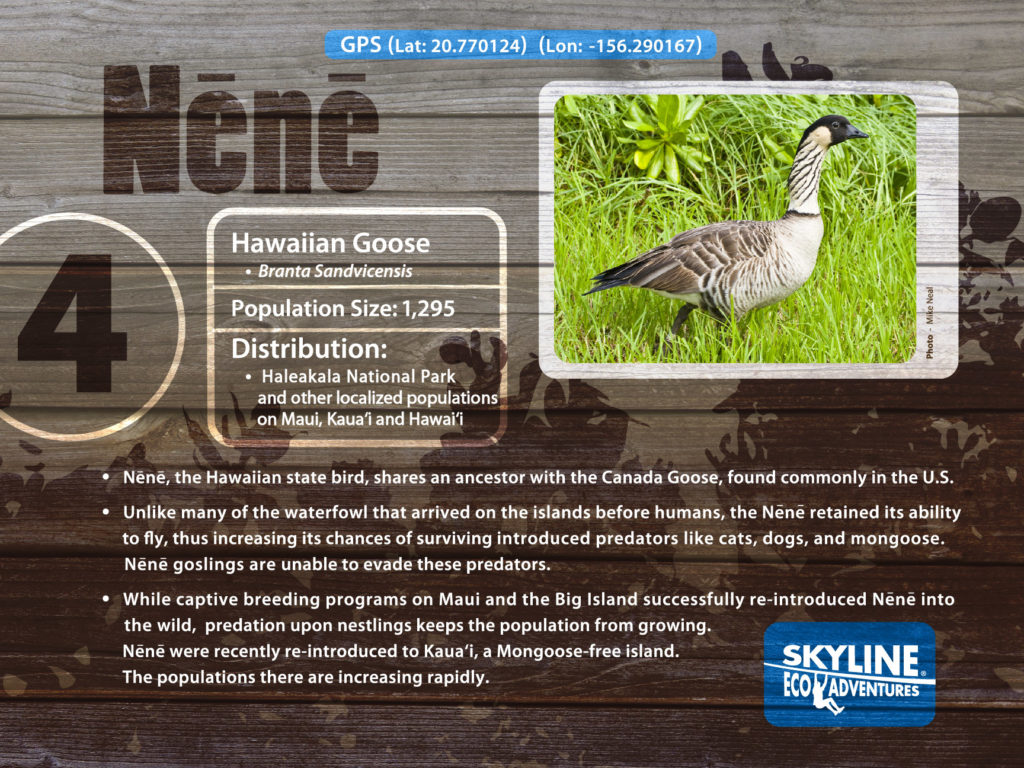 While captive breeding programs on Maui and the Big Island successfully re-introduced nēnē into the wild, predation upon nestlings keeps the population from growing. Nēnē were recently re-introduced to Kaua’i, a mongoose-free island. the populations there are increasing rapidly. The nÄ“nÄ“ is the world's rarest goose.
While captive breeding programs on Maui and the Big Island successfully re-introduced nēnē into the wild, predation upon nestlings keeps the population from growing. Nēnē were recently re-introduced to Kaua’i, a mongoose-free island. the populations there are increasing rapidly. The nÄ“nÄ“ is the world's rarest goose.
‘Io
The ‘Io, or Hawaiian Hawk is regarded by certain Hawaiians as an ‘aumakua, a defied ancestor who takes the shape of a hawk or other non-human creature. People would not harm nor hunt they ‘aumakua, who served as their guide. Warnings and reprimands would be sent to humans by the ‘aumakua in dreams, vision, and calls.  ‘Io is also a symbol of royalty because of its lofty flight, and hence occurs in such names as ‘Iolani (royal hawk) Palace, the official residence of the Hawaiian Kingdom’s last two monarchs. Today, the endangered ‘io lives only on the Island of Hawaii, though they formerly inhabited Maui, Kaua’i and O’ahu. The conversion of native forest into cities, large scale agriculture, and exotic forests continue to be the biggest threat to the survival of the ‘Io.
‘Io is also a symbol of royalty because of its lofty flight, and hence occurs in such names as ‘Iolani (royal hawk) Palace, the official residence of the Hawaiian Kingdom’s last two monarchs. Today, the endangered ‘io lives only on the Island of Hawaii, though they formerly inhabited Maui, Kaua’i and O’ahu. The conversion of native forest into cities, large scale agriculture, and exotic forests continue to be the biggest threat to the survival of the ‘Io.
About the Author: Voted the #1 Zipline Company in Hawaii, Skyline Eco-Adventures prides ourselves on not only providing amazing zipline adventures for you and your family, but also caring for the islands on which we operate. For more information on Skyline Eco-Adventures, click to https://www.skylinehawaii.com/. 